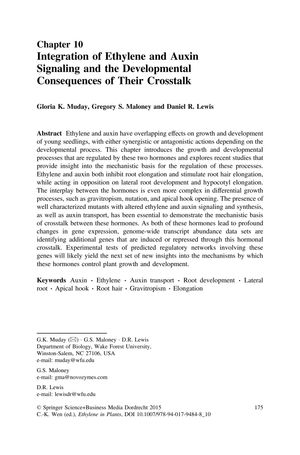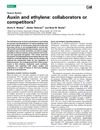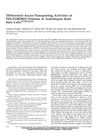Integration of Ethylene and Auxin Signaling and the Developmental Consequences of Their Crosstalk
October 2014
in “
Springer eBooks
”

TLDR Ethylene and auxin hormones interact in complex ways that are essential for plant growth and development.
The document from 2014 examines the interactions between ethylene and auxin, two critical plant hormones, and their combined effects on plant growth and development. It reveals that while both hormones inhibit primary root elongation and promote root hair elongation, they have opposite effects on lateral root development and hypocotyl elongation. Genetic studies using mutants have shown that ethylene-insensitive mutants have increased primary root growth, whereas those with enhanced ethylene signaling have reduced root elongation. Ethylene negatively regulates root gravitropism and positively regulates apical hook formation, while auxin is necessary for hypocotyl growth and apical hook development. The study also finds that a significant number of genes are co-regulated by both hormones, with 33% of ethylene-regulated genes and 23% of auxin-regulated genes overlapping. Ethylene affects auxin transport by regulating the expression of auxin transport proteins and inducing flavonol synthesis, which in turn influences root elongation and development. The document concludes that while the crosstalk between ethylene and auxin is complex, involving both synergistic and antagonistic interactions, it is crucial for plant development, and future research will likely uncover more about the transcriptional networks involved in these hormonal interactions.

